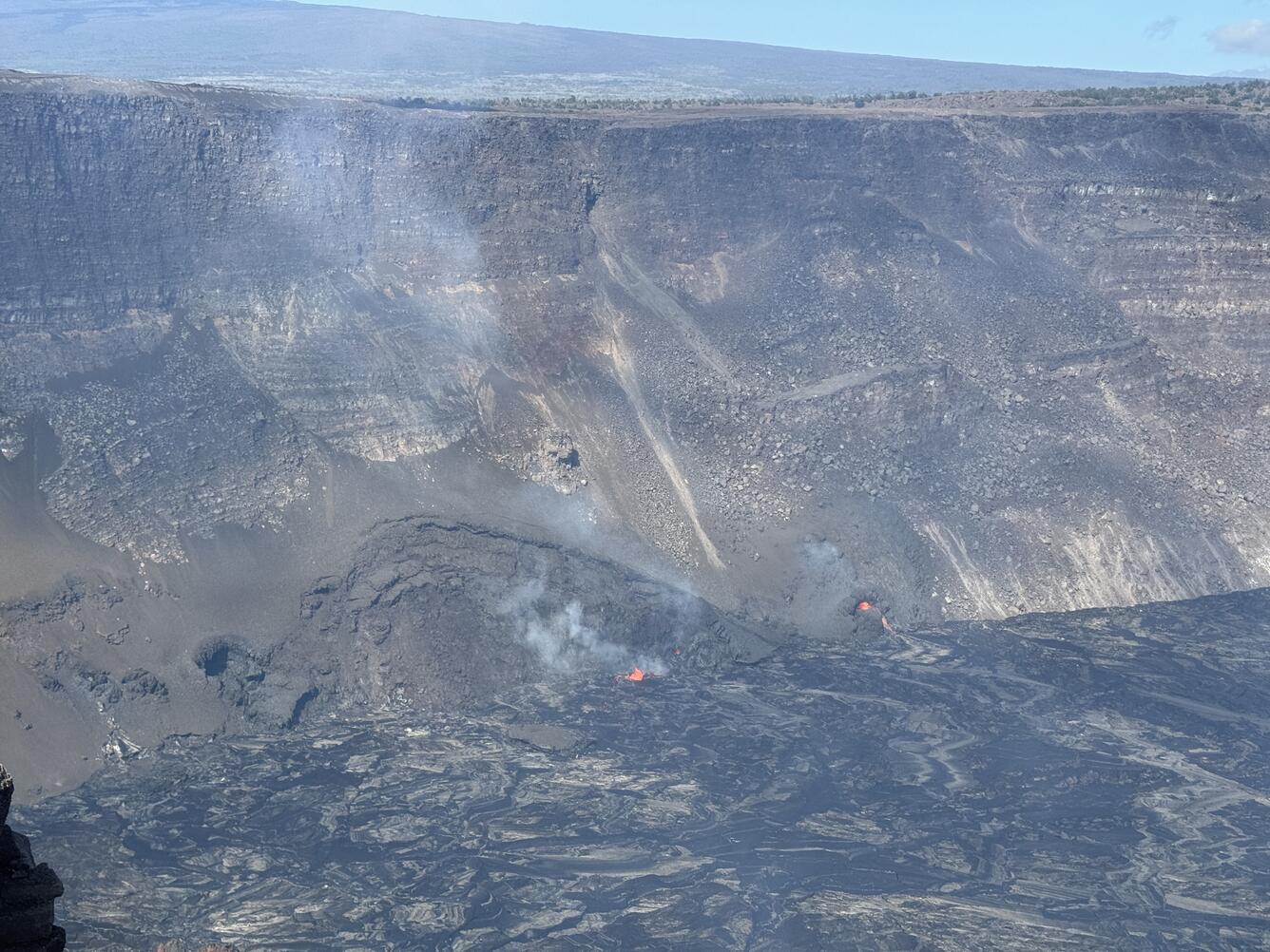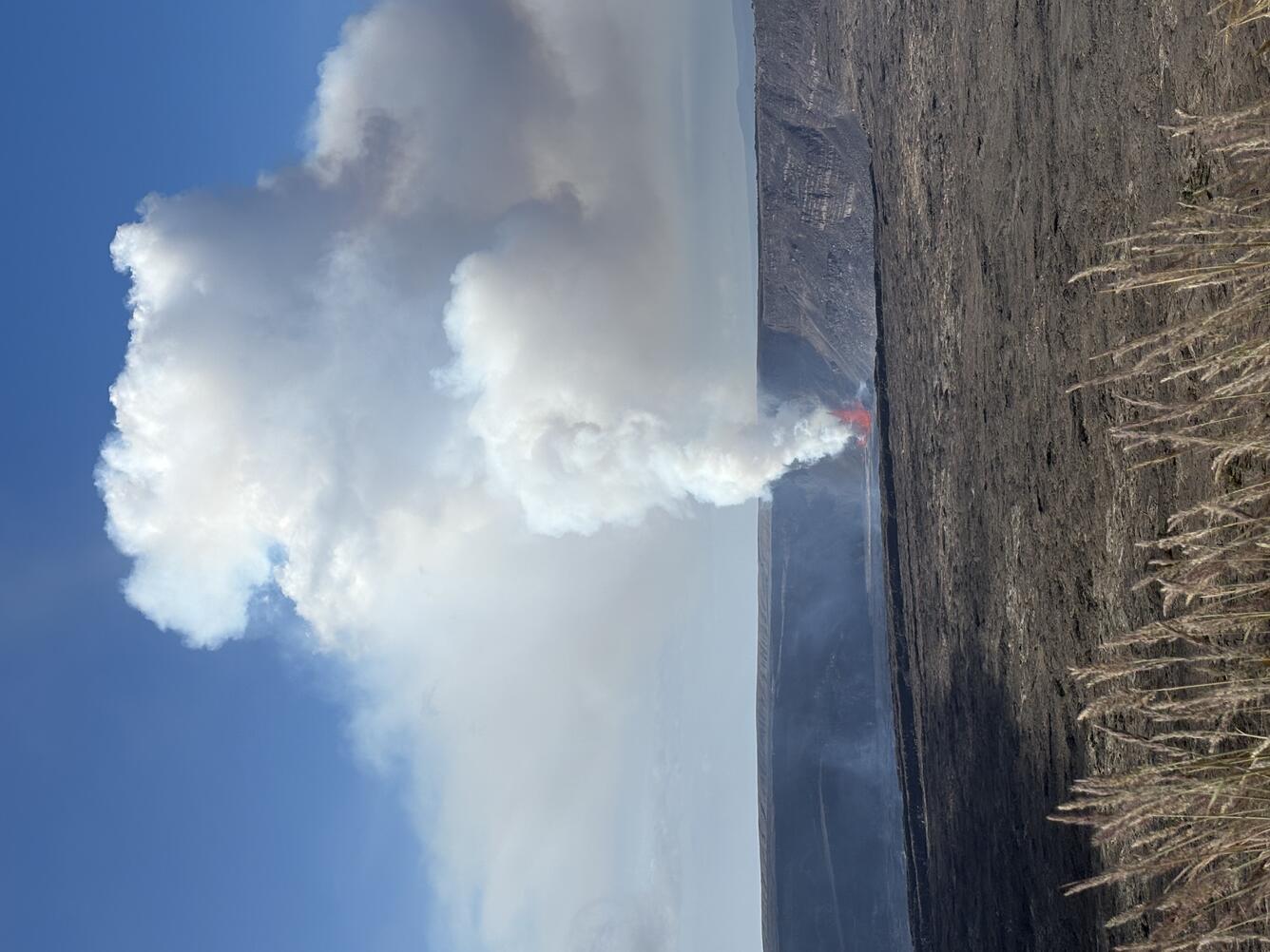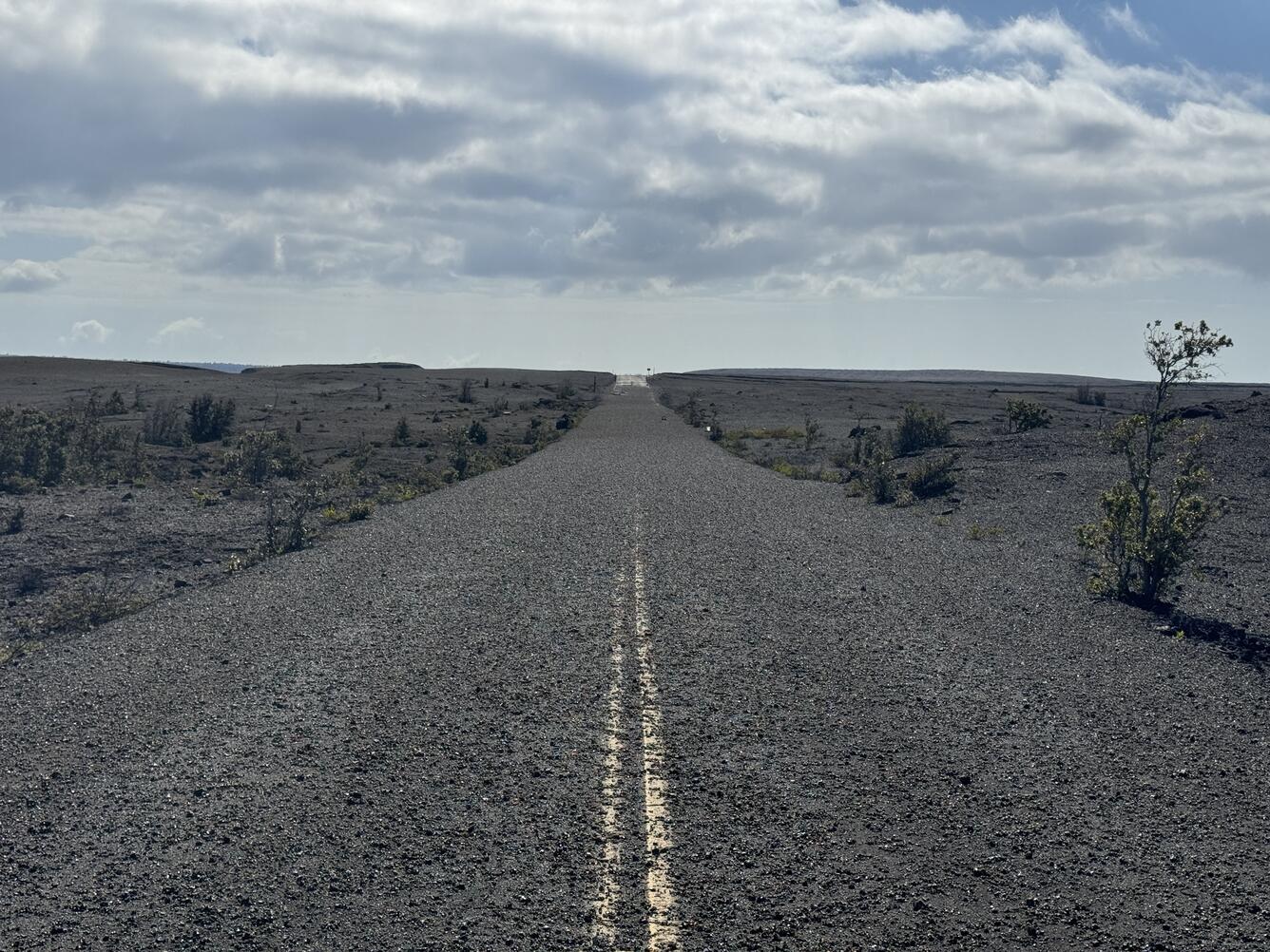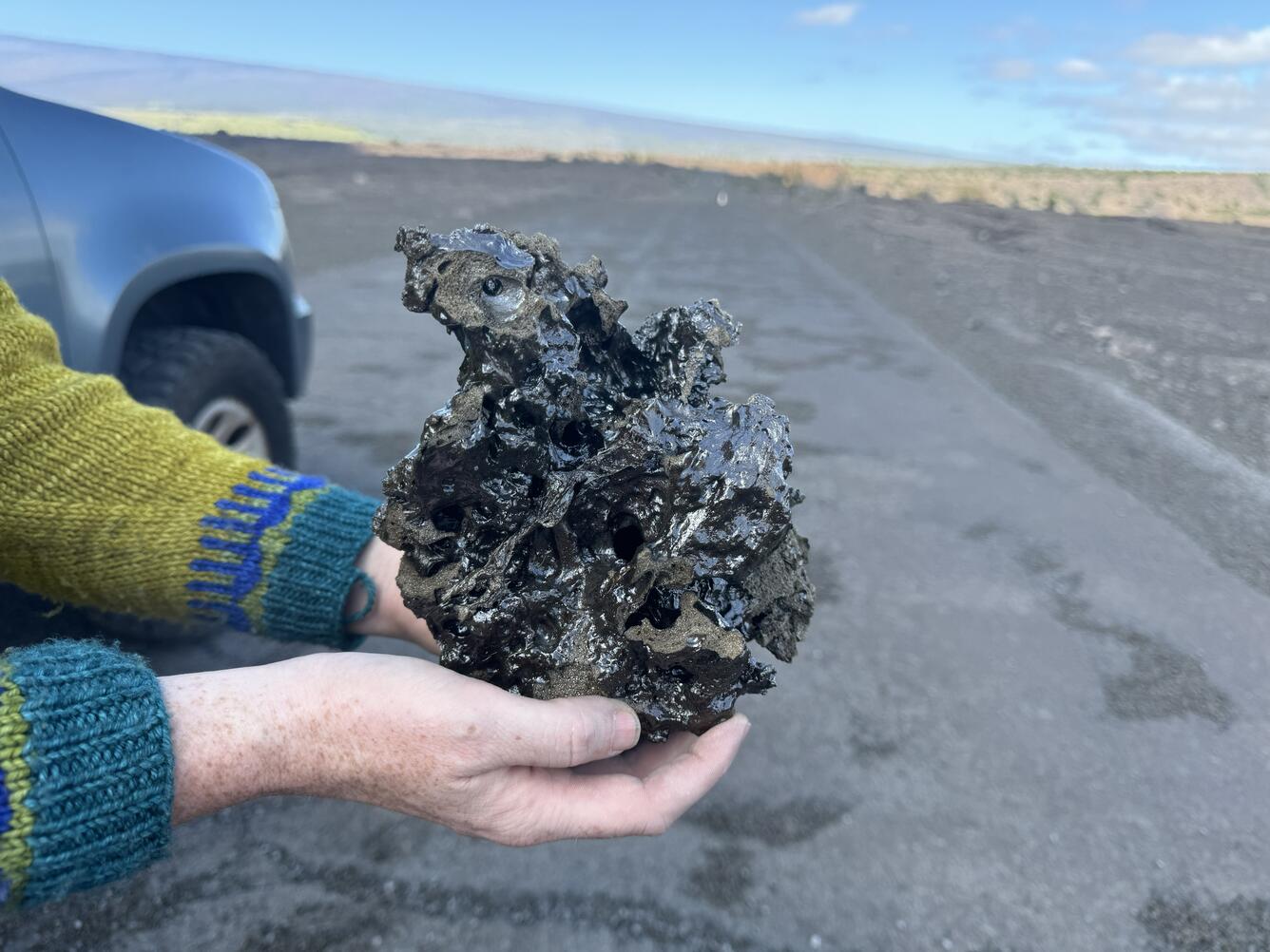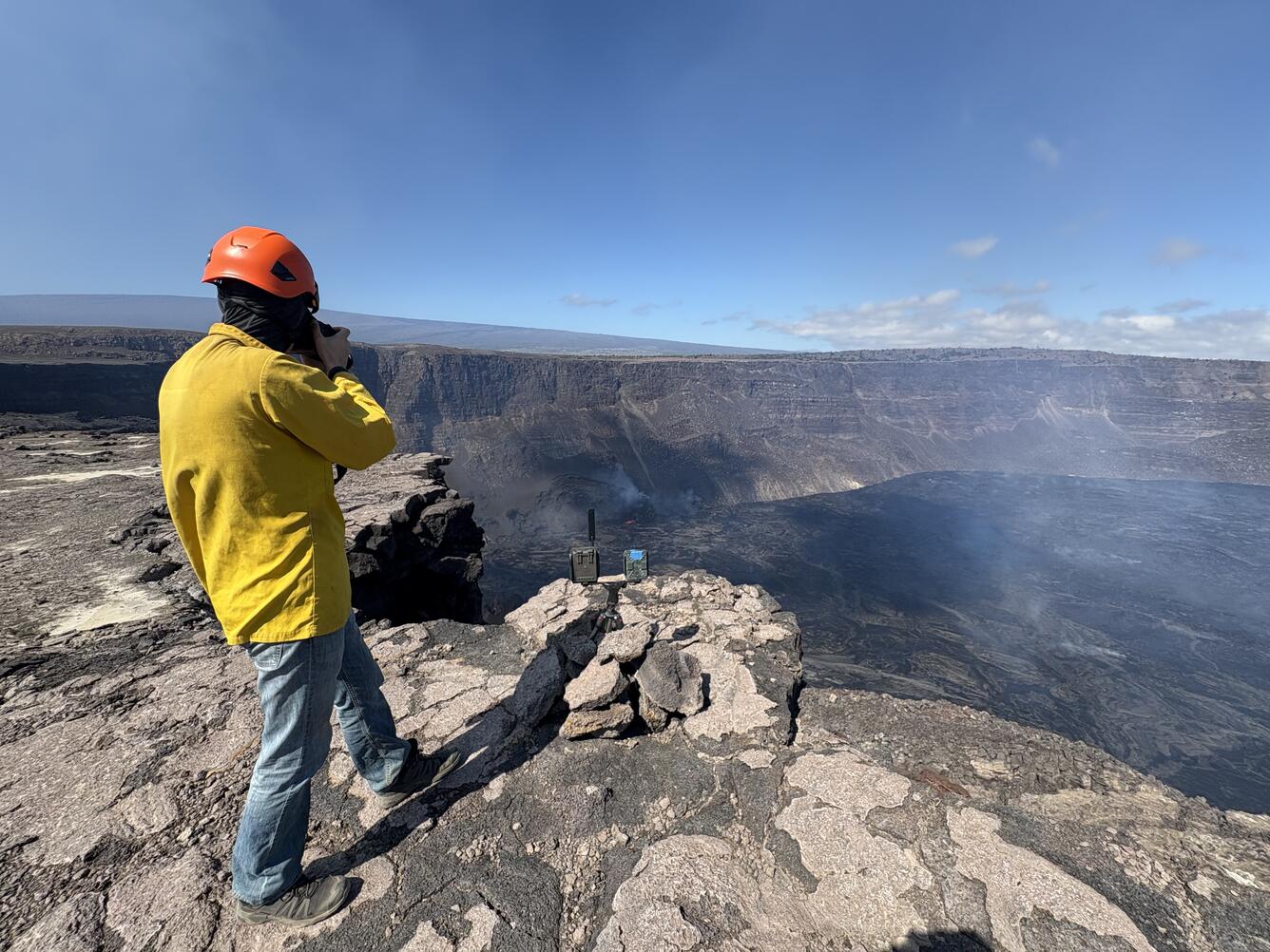Photo and Video Chronology — December 25, 2024 — Kīlauea summit eruption pauses
The vigorous fountaining from vents in the southwest corner of Halemaʻmaʻu crater at the summit of Kīlauea volcano rapidly died down over a few minutes just before 11:00 a.m. today, December 25.
Lava began draining back into the vent at 11:00 a.m. on December 25, at nearly the same time that summit tiltmeters began recording a change from deflation to inflation. Seismic tremor also decreased markedly at the same time. The pattern was similar but more abrupt than the onset of the pause on Monday, December 23, that occurred between 3 and 4 p.m.
Episode 2 lasted a little over 24 hours, which is about twice the duration of the first eruptive episode. Prior summit eruptions have lasted days to weeks and there is a high probability that this eruption will resume if the summit repressurizes over the coming days.


